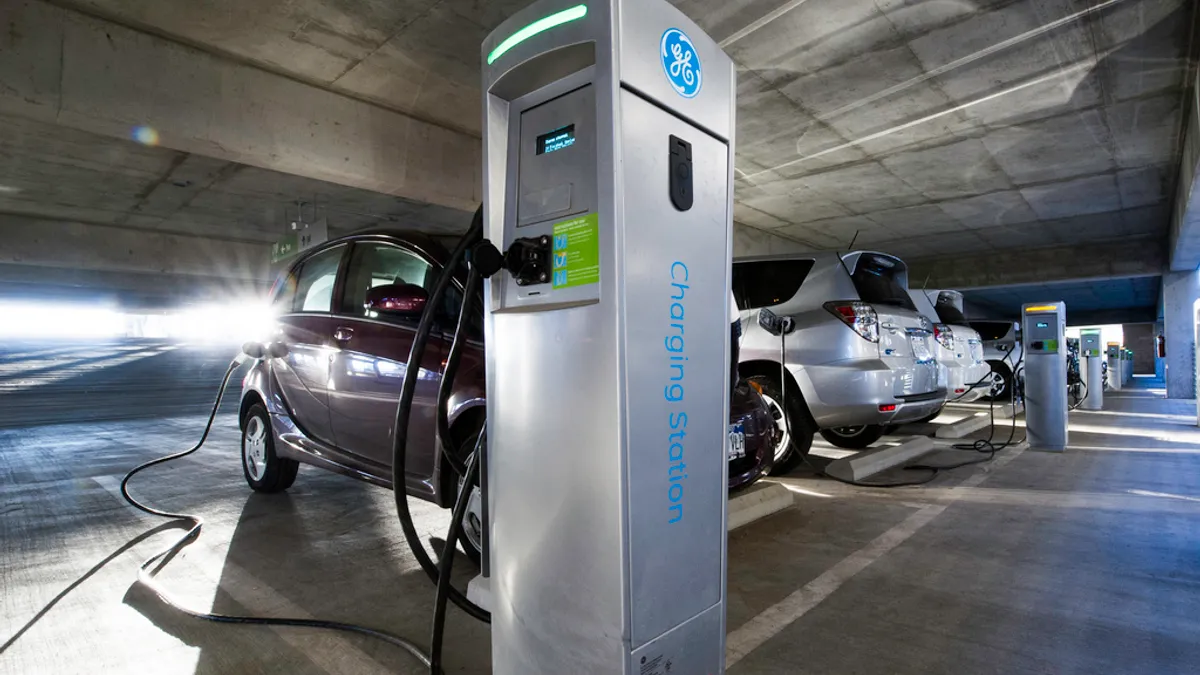Dive Brief:
- The Salt River Project has analyzed the initial results from a study of electric vehicle owners' charging habits, and has concluded time-of-use (TOU) rates were effective at helping push those loads off peak, which will help the utility avoid building additional power plants.
- There are about 4,400 electric vehicle owners in SRP's territory, and the utility estimates they use more than 9,121 MWh each year. During the system's peak usage, EVs account for about 1 MW of demand.
- In addition to how EVs were impacting the distribution system, SRP said it also wanted to learn how customers selected and used pricing options.
Dive Insight:
Salt River Project already has a significant number of electric vehicles on its system, and the utility is preparing for more. By studying charging habits, the Arizona utility now knows it can use variable-rate plans to shift some EV demand to off-peak hours.
The study took 100 drivers and installed FleetCarma data loggers in their vehicles to gather charging information such as time, duration and location. The Electric Power Research Institute is also involved in the study, which launched last June and will end this year. A second study is planned later this year with newer EVs that have a longer range.
Jamie Dunckley, EPRI data scientist for electric transportation, said the EV landscape has changed dramatically in just a few years, and there are more than 32 models coming to market by 2019.
"Electric vehicles are no longer just the small, short-range vehicles that were available in 2010. There soon will be an affordable, electric equivalent to every conventional vehicle currently on the market,” Dunckley said. “Understanding when, where and how much people charge is fundamental to be able to plan for and serve these customers effectively.”
The study found that TOU price plans were effective at incentivizing EV drivers "to charge later than they normally would, which will help SRP meet customer demand without needing to add power plants," the utility said in its announcement. But SRP does have some concerns about how that result will hold up at scale.
Current EV drivers are early adopters who tend to be more aware of utility pricing plans and how a TOU rate can make charging more affordable at off-peak times. But SRP said it is not clear if the next generation of EV buyers will be as sophisticated.
"SRP hopes to educate future EV owners on the benefits and encourage them to use TOU programs and avoid charging during peak times," the utility said.
Last year, a report from the Edison Electric Institute predicted there will be 7 million zero-emissions vehicles on the road by 2025—up from 567,000 at the end of 2016. According to Bloomberg New Energy Finance, EV sales will account for 10% of new car sales within five years.















